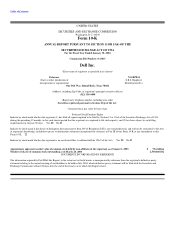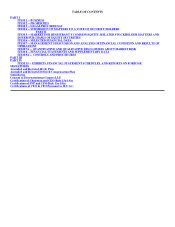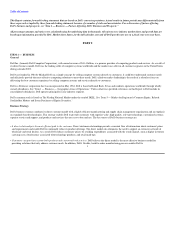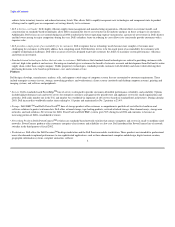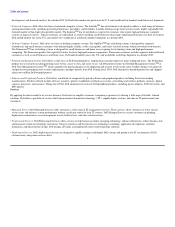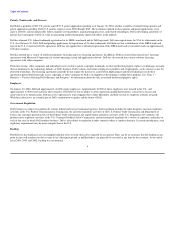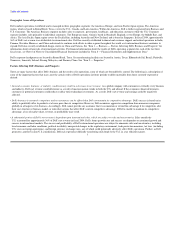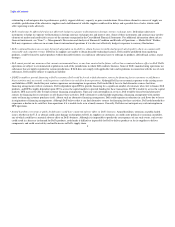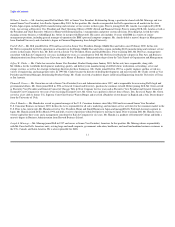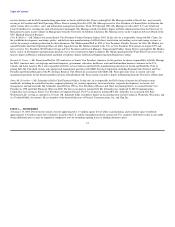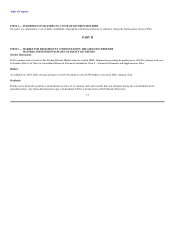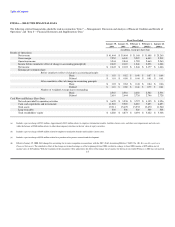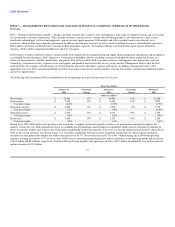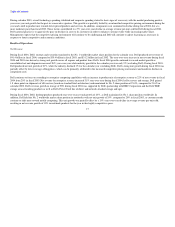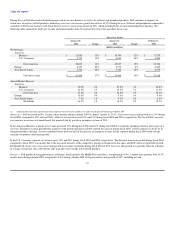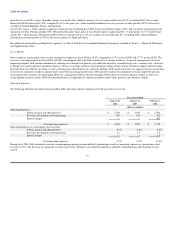Dell 2003 Annual Report Download - page 12
Download and view the complete annual report
Please find page 12 of the 2003 Dell annual report below. You can navigate through the pages in the report by either clicking on the pages listed below, or by using the keyword search tool below to find specific information within the annual report.
Table of Contents
relationship is advantageous due to performance, quality, support, delivery, capacity, or price considerations. Even where alternative sources of supply are
available, qualification of the alternative suppliers and establishment of reliable supplies could result in delays and a possible loss of sales, which could
affect operating results adversely.
• Dell's results may be affected if it does not effectively hedge its exposure to fluctuations in foreign currency exchange rates. Dell utilizes derivative
instruments to hedge its exposure to fluctuations in foreign currency exchange rates and interest rates. Some of these instruments and contracts may involve
elements of market and credit risk in excess of the amounts recognized in the Consolidated Financial Statements. For additional information about risk on
financial instruments, see "Item 7 — Management's Discussion and Analysis of Financial Condition and Results of Operations — Market Risk." Further,
Dell may experience a decrease in revenue from its international operations if it is does not effectively hedge its exposure to currency fluctuations.
• Dell's continued business success may be largely dependent on its ability to obtain licenses to intellectual property developed by others on commercially
reasonable and competitive terms. If Dell or its suppliers are unable to obtain desirable technology licenses, Dell could be prohibited from marketing
products, could be forced to market products without desirable features or could incur substantial costs to redesign its products, defend legal actions, or pay
damages.
• Dell cannot provide any assurance that current environmental laws, or any laws enacted in the future, will not have a material adverse effect on Dell. Dell's
operations are subject to environmental regulation in each of the jurisdictions in which Dell conducts business. Some of Dell's manufacturing operations use
substances that are highly regulated in various jurisdictions. If Dell does not comply with applicable rules and regulations in connection with the use of such
substances, Dell could be subject to significant liability.
• If DFS is unable to provide financing to Dell's customers, Dell would be forced to find alternative sources for financing for its customers or self-finance
these activities and, as a result, could experience a decline in its cash flow from operations. Although Dell has no economic exposure to the existing assets
and liabilities of DFS, should the joint venture experience an interruption in operations, Dell would likely have to find alternative sources for future
financing arrangements with its customers. Dell is dependent upon DFS to provide financing for a significant number of customers who elect to finance Dell
products, and DFS is highly dependent upon CIT to access the capital markets to provide funding for these transactions. If CIT is unable to access the capital
markets, DFS may not be able to fund customer financing arrangements. Upon any such interruption in services, Dell would be forced to find alternative
sources for financing for its customers or self-finance these activities. Dell's alternatives could include negotiating a financing arrangement with another
entity or financing customer purchases itself. Absent such an alternative financing arrangement, Dell could experience reductions in cash flows due to losses
in originations of financing arrangements. Although Dell believes that it can find alternative sources for financing for these activities, Dell could nonetheless
experience a decline in its cash flow from operations if it is unable to do so in a timely manner. Currently, Dell does not anticipate any such interruption in
DFS operations.
• Armed hostilities, terrorism or public health issues could have a material adverse effect on Dell's business. Armed hostilities, terrorism, or public health
issues, whether in the U.S. or abroad, could cause damage or disruption to Dell, its suppliers or customers, or could create political or economic instability,
any of which could have a material adverse effect on Dell's business. Although it is impossible to predict the consequences of any such events, such events
could result in a decrease in demand for Dell's products, could make it difficult or impossible for Dell to deliver products or for its suppliers to deliver
components, and could create delay and inefficiencies in Dell's supply chain.9


